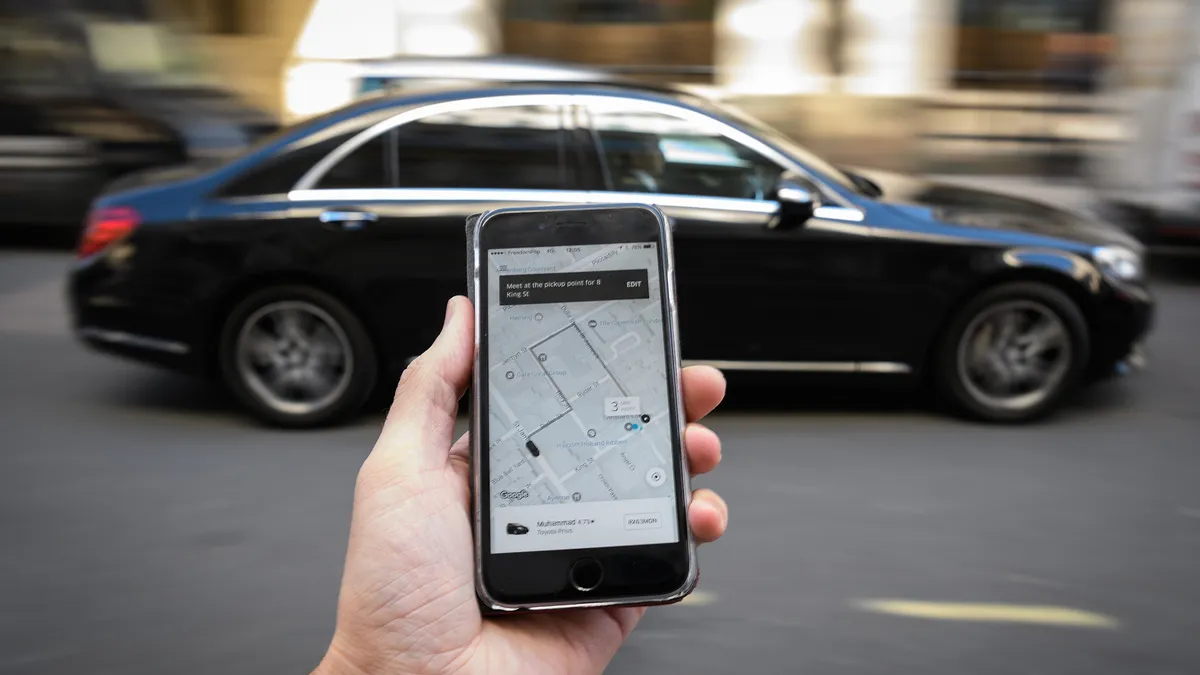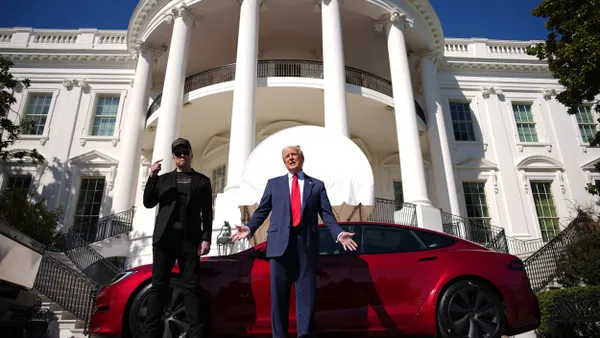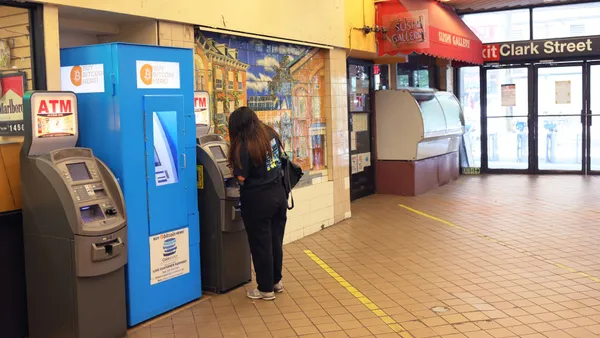Dive Brief:
- Uber reported an all-time high of 5 million drivers during its Q2 earnings results Tuesday, with 70% of new drivers in the U.S. pointing to inflation as a reason for joining the platform, CEO Dara Khosrowshahi said during the company’s earnings call.
- The record high represents a 31% increase in Uber’s driver base year-over-year — meaning the number of drivers earning on the platform has now surpassed pre-pandemic figures. The number of new drivers signing up in the U.S. shot up 76% year-over-year, Khosrowshahi said.
- “Right now the machine is working and we are a very competitive place to earn, and it’s showing in the driver retention numbers,” he said during Uber’s Q2 call.
Dive Insight:
Driver engagement for both active and new drivers accelerated despite skyrocketing gas prices, Khosrowshahi said. Drivers across the U.S. which are cross-dispatching are currently earning about $30 per hour, he said, while drivers in mobility-only are making $37 per utilized hour.
Prices for gas have risen rapidly as inflation continues to batter the U.S. economy, ballooning 11.2% in June, according to data released by the U.S. Bureau of Labor Statistics (BLS) July 13. Consumers are also facing historically high costs for food and energy as well, with prices for food increasing 9.1% YoY ending in June.
Wages and salaries for U.S. civilian workers overall have also not kept pace with inflation, with wages increasing 1.4% in the second quarter according to July 29 BLS data. When taking inflation into account, wages and salaries declined 3.5% YoY ending in June, according to the report.
Rideshare drivers and couriers are typically part-time workers, meaning they do not earn a consistent wage, a factor that could leave them more vulnerable to seesawing prices. Uber has also faced consistent criticism from drivers and labor entities regarding wage transparency, worker status and the inclusion of benefits throughout various markets. It is currently embroiled in an antitrust lawsuit along with fellow rideshare Lyft regarding allegations of price-fixing, according to a June report by Reuters.
Uber released a new feature called Upfront Fares on July 29 in a bid to create more transparency for fares, enabling drivers to see exactly how much they would earn for picking up a potential ride within the app. It is also launching its Uber Pro Card, a debit card with cashback features for electronic vehicle (EV) charging and gas, offering between 2-6% in cashback based on the drivers’ status in its Uber Pro rewards program.
Despite continuing inflation pressures, Uber has not seen any “discernable trends” pointing to economic sensitivity, according to CFO Nelson Chai when asked about changes in the company’s delivery segment. Surges regarding delivery are still due more to COVID-19 activity, he said, pointing to a recent COVID spike in Japan that led to a bump in delivery demand.
The company — which has infamously burned through its cash reserves throughout the majority of its history in a quest for global expansion — also reported its first ever positive cash flow of $382 million for its second quarter. These results were far above analyst expectations, fulfilling the company’s goal of becoming free cash flow positive before the end of the year. Uber posted $8.1 billion in revenue, with growth in its delivery segment increasing by 37%.
“What we're seeing is, first of all, from a revenue margin perspective, a real uptick on the delivery side as…the cost per transaction is just improving,” Chai said during the earnings call. “And so we're doing a really good job as a team in terms of creating efficiencies there. We're seeing gross profit improvement across both mobility and delivery.”
Uber reported a net loss of $2.6 billion for the second quarter, attributing $1.7 billion of this loss to its equity investments, including the reevaluation of its stakes in self-driving company Aurora as well as delivery apps Grab and Zomato. Gross bookings expanded 33% year-over-year (YoY).











